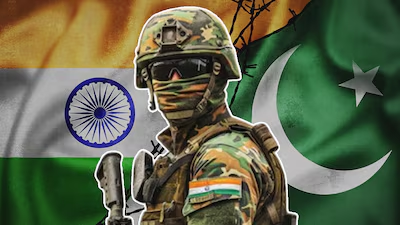
Historic Ceasefire Agreement Between India and Pakistan Announced Today
Historic Ceasefire Agreement Between India and Pakistan Announced Today https://camaal.in/storages/2025/05/india-pak-war-3-2025-05-5abb21b631e155abb15ab59562217381.avif 400 225 Creativo Camaal https://camaal.in/cores/cache/ls/avatar/5e27d69073e2234a12824edc1b3a9419.jpg?ver=1765987294Background: Rising Tensions and Operation Sindoor
The Ceasefire Announcement
The breakthrough was first announced by U.S. President Donald Trump on his Truth Social platform, stating, “After a long night of talks mediated by the United States, I am pleased to announce that India and Pakistan have agreed to a FULL AND IMMEDIATE CEASEFIRE. Congratulations to both Countries on using Common Sense and Great Intelligence.”
India’s Foreign Secretary Vikram Misri confirmed the agreement in a press briefing, noting that Pakistan’s Director General of Military Operations (DGMO) initiated a call to India’s DGMO at 3:35 PM IST. Both sides agreed to halt all firing and military actions across land, air, and sea, effective from 5:00 PM IST. The DGMOs are scheduled to hold follow-up talks on May 12 at 12:00 PM IST to ensure compliance.
Pakistan’s Foreign Minister Ishaq Dar also affirmed the ceasefire, emphasizing Pakistan’s commitment to “peace and security in the region, without compromising on its sovereignty and territorial integrity.” He highlighted the involvement of 36 countries, with key roles played by the United States, Saudi Arabia, and Turkey in facilitating the agreement.
Key Details of the Ceasefire
- Effective Time: 5:00 PM IST, May 10, 2025
- Scope: Cessation of all military actions, including firing, drone strikes, and missile attacks on land, air, and sea.
- Next Steps: The DGMOs of both nations will reconvene on May 12 to review the ceasefire’s implementation.
International Mediation: The United States, led by President Trump, Vice President JD Vance, and Secretary of State Marco Rubio, played a pivotal role in brokering the deal. Saudi Arabia and Turkey also contributed significantly.
Reactions and Implications
The ceasefire has been widely welcomed as a critical step toward de-escalation. U.S. Secretary of State Marco Rubio praised Indian Prime Minister Narendra Modi and Pakistani Prime Minister Shehbaz Sharif for their “wisdom, prudence, and statesmanship in choosing the path of peace.” He noted that talks on a “broad set of issues” will begin at a neutral site, signaling potential for broader diplomatic engagement.
In India, External Affairs Minister S. Jaishankar reiterated India’s firm stance against terrorism, stating, “India has consistently maintained a firm and uncompromising stance against terrorism in all its forms and manifestations. It will continue to do so.” Meanwhile, Indian military officials, including Commodore Ravi Nair, emphasized that the armed forces remain vigilant to protect national sovereignty.
In Pakistan, Prime Minister Shehbaz Sharif described the ceasefire as a “full-fledged” agreement, expressing hope for dialogue and diplomacy. The reopening of Pakistan’s airspace, previously closed due to the conflict, was a tangible sign of de-escalation.
Regional leaders, such as Mehbooba Mufti, former Chief Minister of Jammu and Kashmir, expressed relief, noting that the people of Jammu and Kashmir, who often bear the brunt of such conflicts, can now breathe easier,
What’s Next?
While the ceasefire is a positive development, the road to lasting peace remains complex. The agreement’s success hinges on both nations’ commitment to sustained dialogue and addressing underlying issues, particularly the Kashmir dispute. The scheduled DGMO talks on May 12 will be crucial in maintaining the truce and building trust.
International mediators, including the U.S., Saudi Arabia, and Turkey, are likely to continue playing a role in facilitating discussions. The proposed talks at a neutral site could pave the way for addressing broader bilateral issues, from trade to counterterrorism cooperation.
Why This Matters
The India-Pakistan ceasefire is not just a regional milestone but a global one. As nuclear-armed neighbors with a history of conflict, their ability to step back from the brink demonstrates the power of diplomacy and international cooperation. For the people of Jammu and Kashmir, this truce offers a reprieve from the constant threat of violence. For the world, it reduces the risk of a catastrophic escalation in a volatile region.
